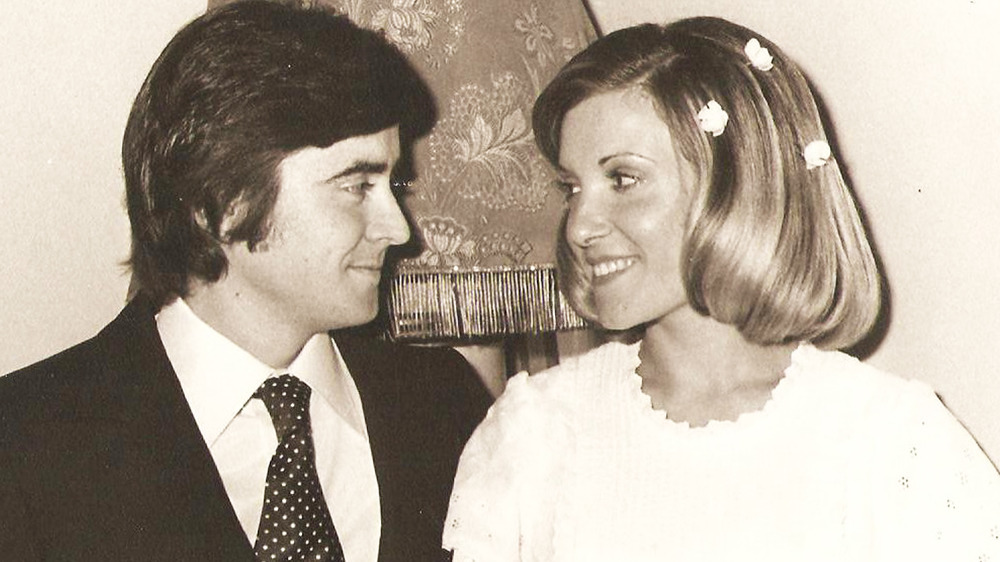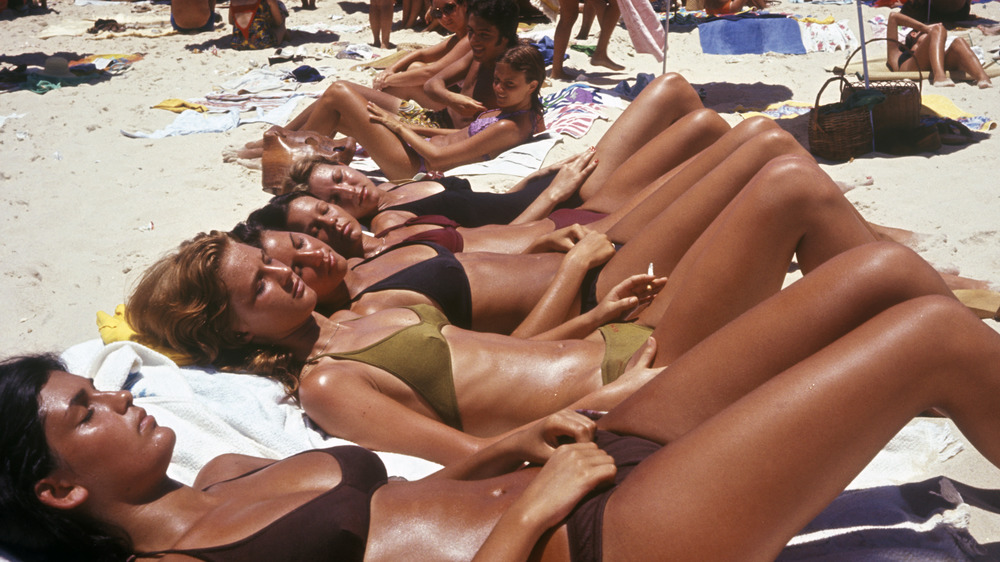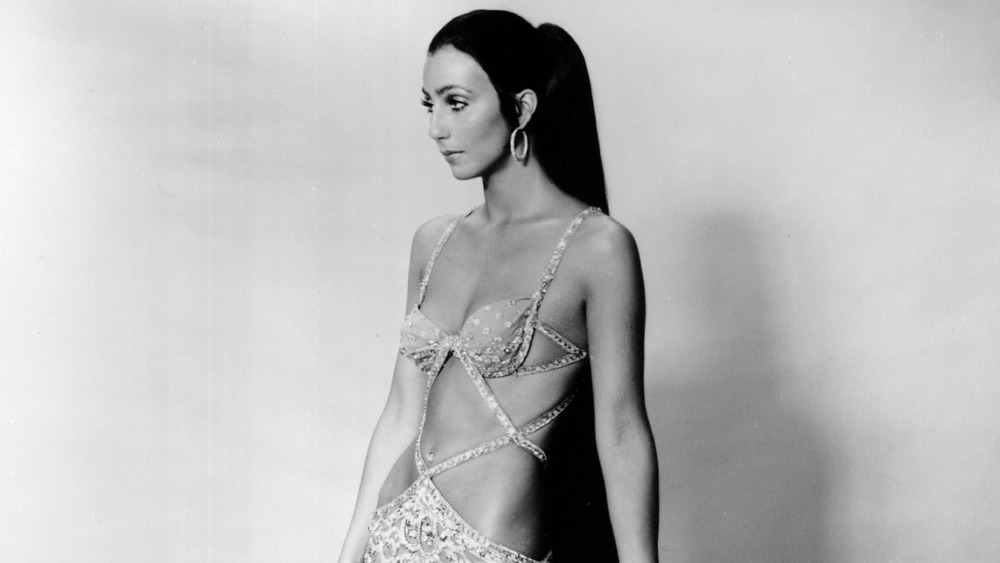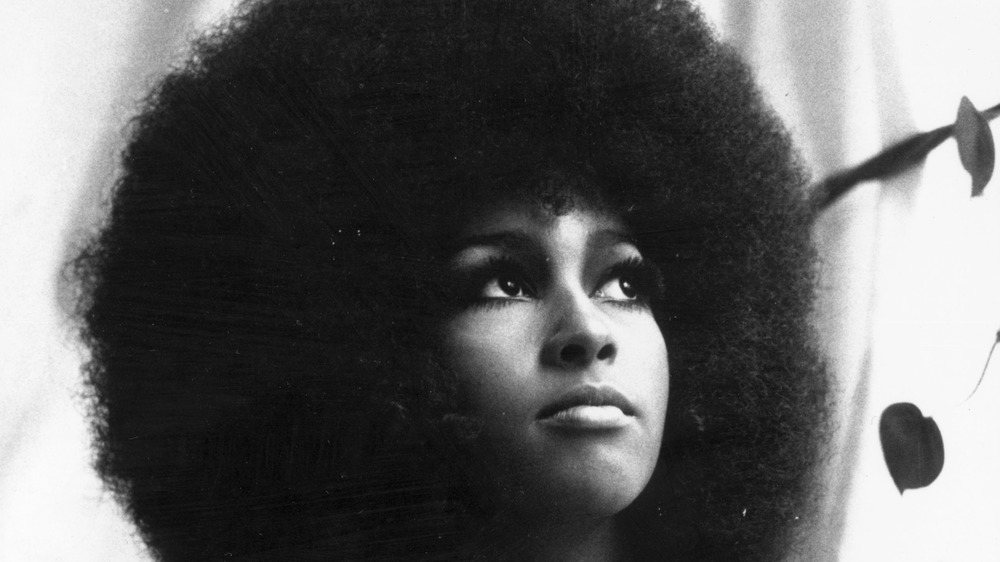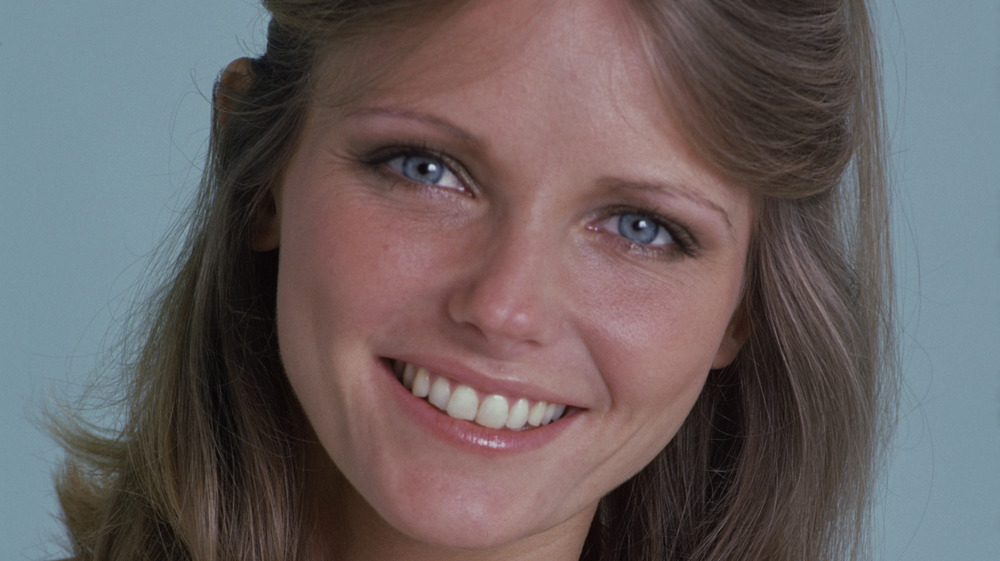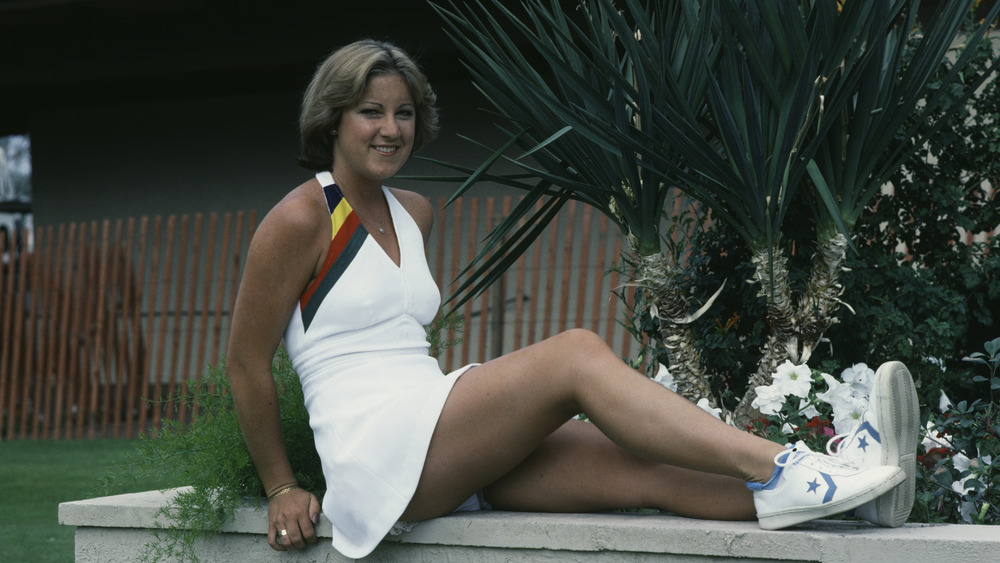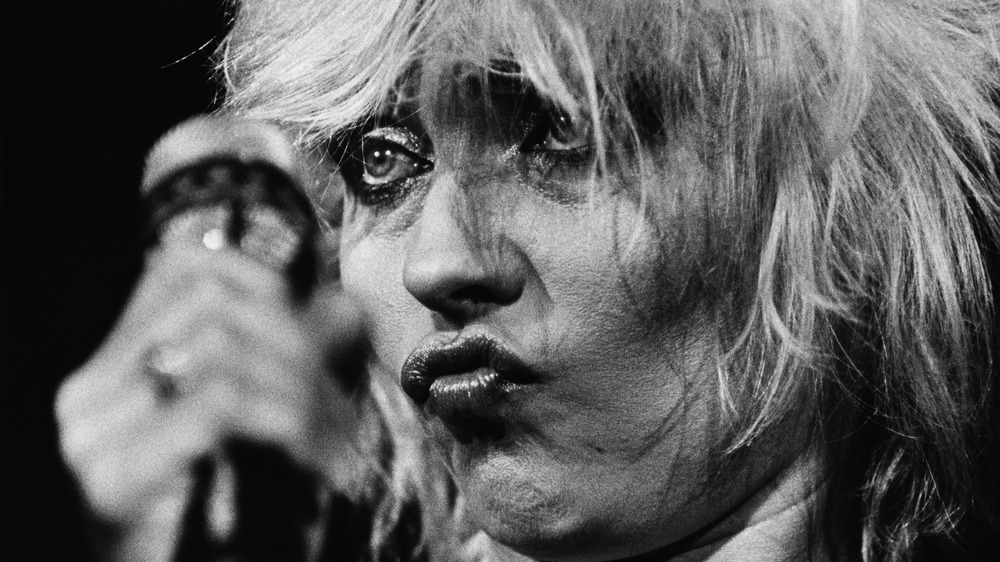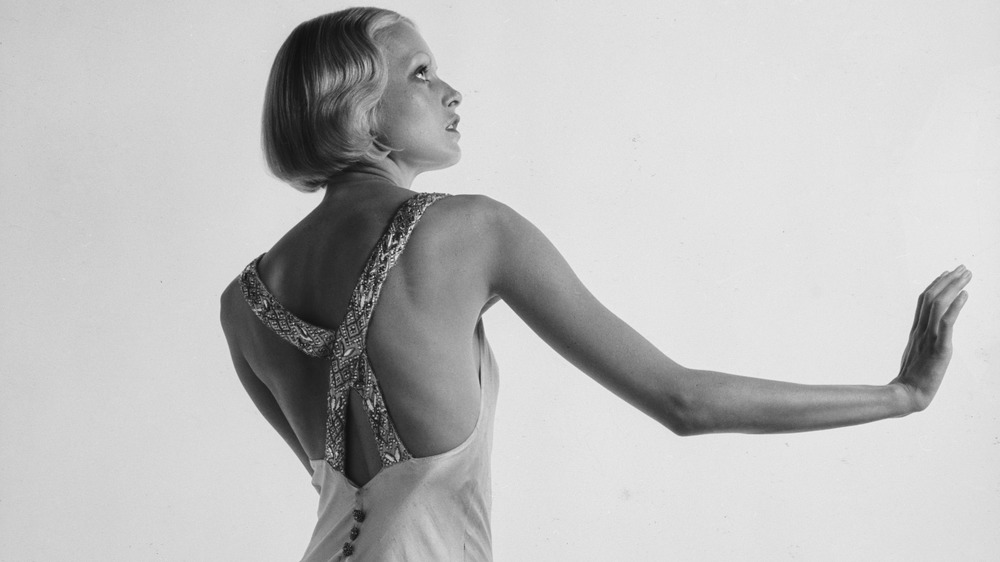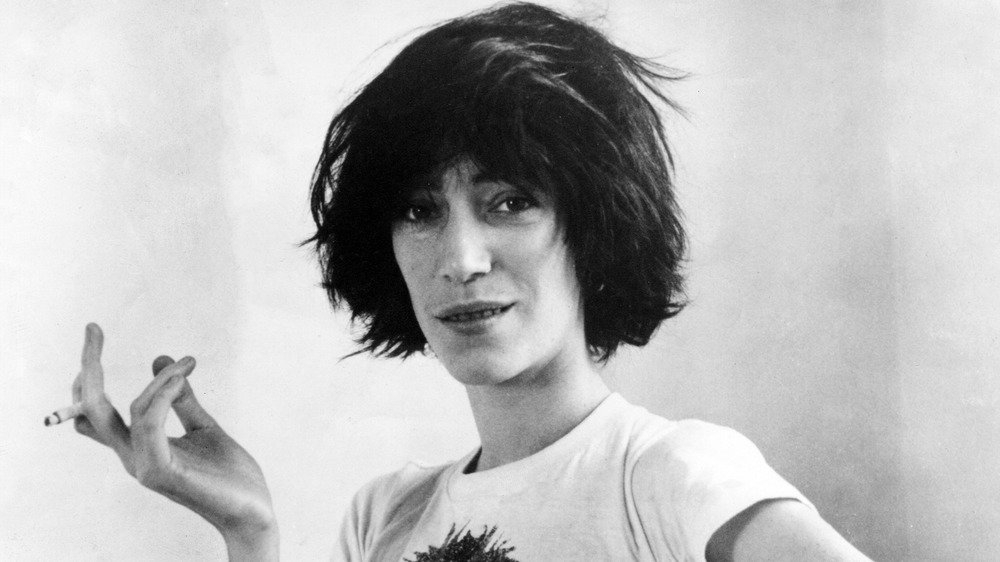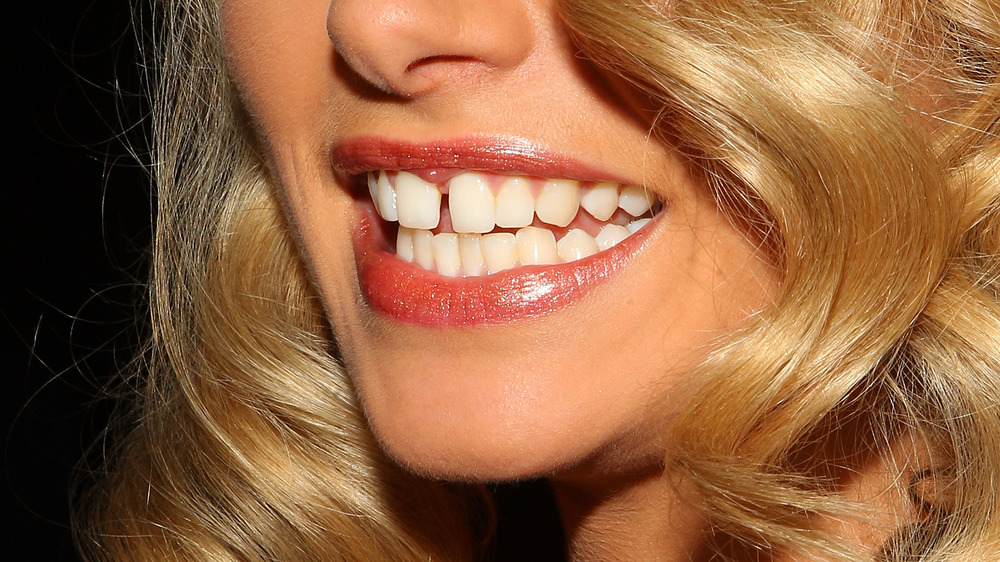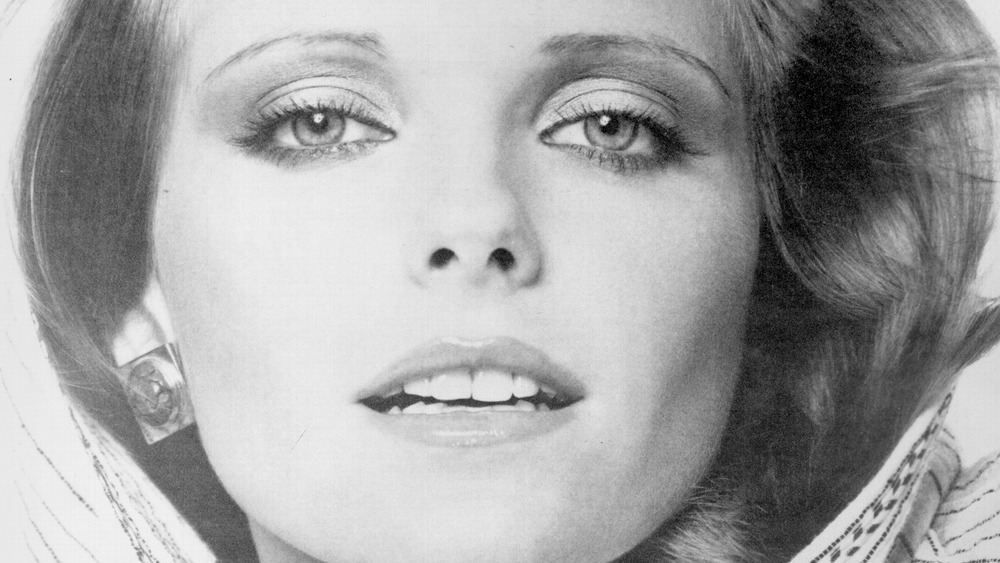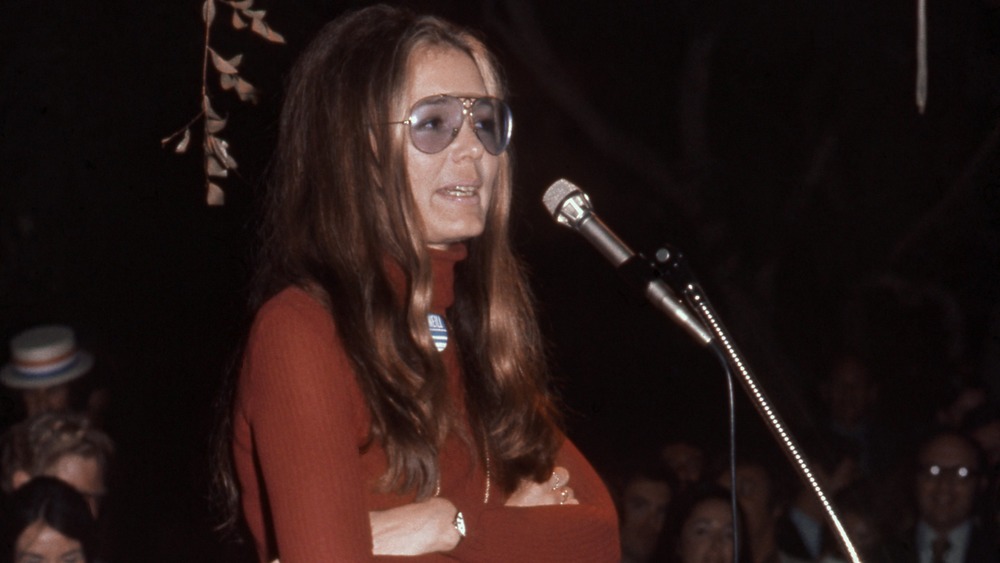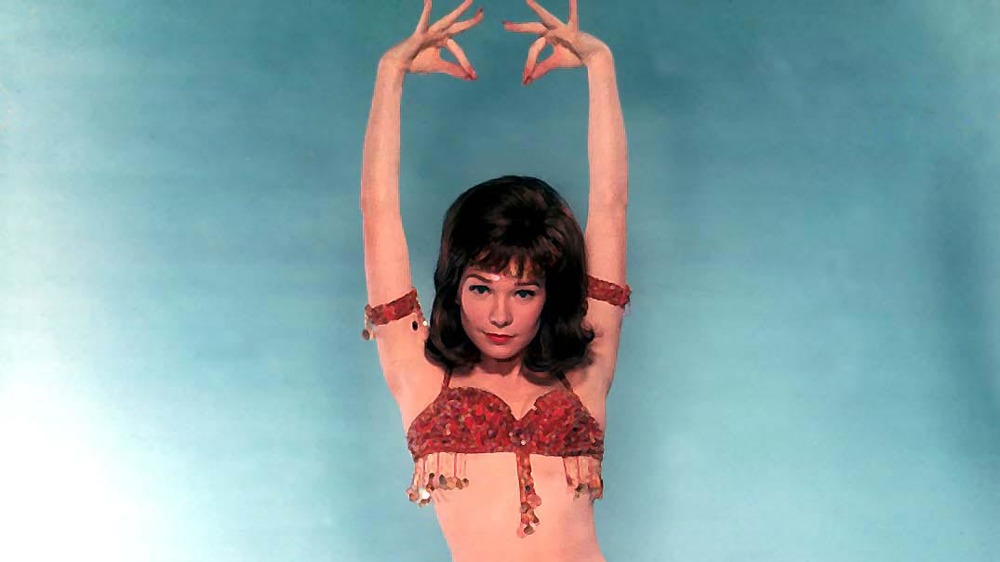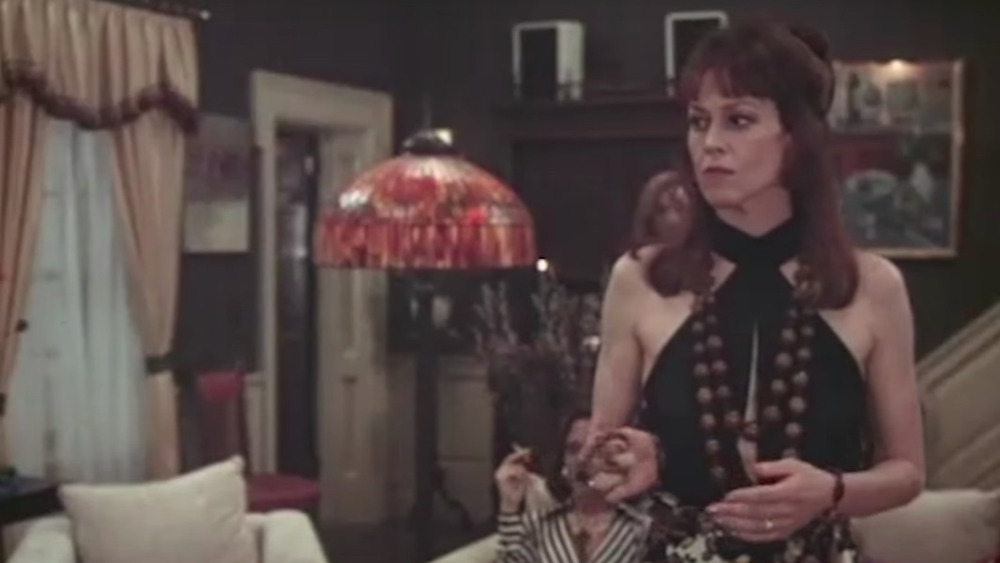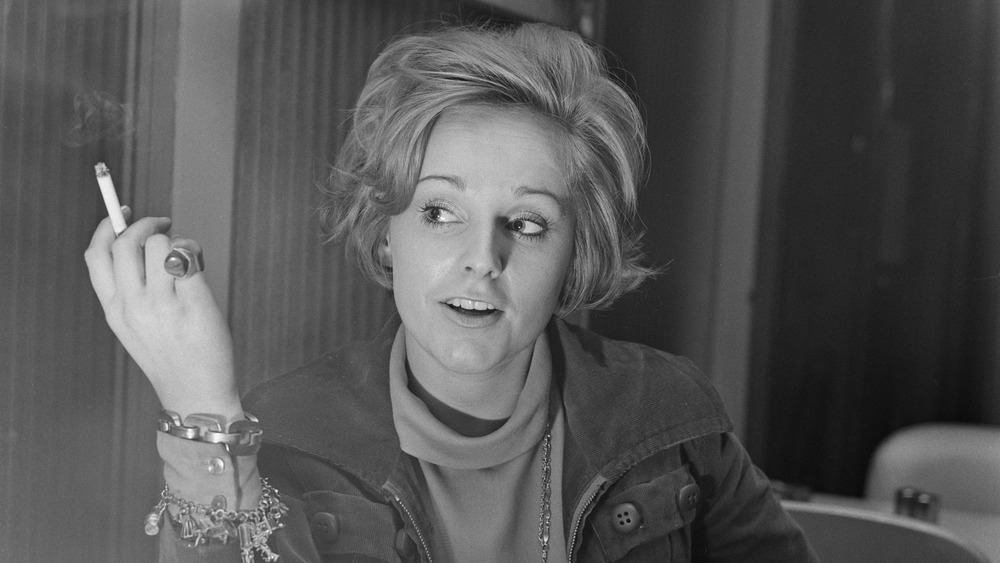Traits Men Found Attractive 50 Years Ago That Might Surprise You
We may receive a commission on purchases made from links.
There's a reason why when you page through your parents' high school yearbook, the teens in the photos look "different" from the teens of today. These differences may be hard to put your finger on, or seem completely inexplicable, but allow us to explain.
Science would have us believe that the traits many find attractive are driven primarily by the biological imperative to procreate and thereby propagate humanity, as a 2016 study published in the journal Evolutionary Psychology highlighted, but there's something else at play too. And that is what's "in style."
The voices of those dictating what is in style at any given time can be quite compelling, at least in the moment. And who do those voices belong to? Ultimately, the medium is always the media (via CNN). That should go a long way toward helping to explain why the traits men found attractive in women 50 years ago were so surprising.
Men were attracted to sun-kissed skin some 50 years ago
Prior to the 1920s, pale skin was "in," according to The Guardian. Back then, it signified that one possessed enough wealth to avoid engaging in manual and outdoor labor. By the 1960s, however, a suntan had become a signifier of wealth. It meant that you had the time and the money to fly and vacation in warmer climates. By the 1970s the fashion industry had taken note, and Vogue began featuring models with glistening, suntanned skin, according to The Washington Post.
Throughout much of the '70s, you couldn't be tan enough. Women, men, and children tanned. When the first officially SPF-rated sunscreens came out in 1978, they came in a maximum of SPF 15, according to the FDA. That may sound shocking, but science didn't really begin to make the connection between skin cancer and sun exposure until the 1980s (via Skin Cancer Foundation). Therefore, throughout the 1970s sun-tanned skin was unabashedly considered attractive without the undercurrent of health concerns.
Men found it attractive for a woman to have hair like Cher
The fact that butt-length hair was cultivated by women and seen as attractive by heterosexual men during the 1970s isn't exactly surprising. Throughout history, long hair has been considered "more attractive" on women than short (via Psychology Today).
This reality is consistent with evolutionary theory. A 2015 research paper published in Advances in Anthropology traced the evolution of head hair in humans from being as naturally short as body hair (at the time when humans were barely evolved from their more primitive predecessors) to where we are currently, where women's hair is biologically programmed to be thicker and grow longer than men's.
What may be surprising, however, is how evolutionary theory dovetailed with media influence to make the endless locks rocked by Cher, Ali McGraw, and Marlo Thomas during the 1970s so desirable at the time. According to a 2004 research paper published in the journal Human Nature, men don't just find women with long hair more attractive, they actually believe they are "healthier." And this "healthy-is-beautiful" trend was just finding its footing in the 1970s, according to The Washington Post.
The Afro enjoyed a surge in popularity in the '60s and '70s
In 1960s, a movement was growing among Black women that came down to, as journalist Princess Gabbara wrote in Ebony magazine, "To hell with that!" As the Black is Beautiful movement caught momentum throughout the decade, Black women "took back their hair," and the Afro hairstyle emerged as a "symbol of Black beauty, liberation and pride."
As the 1970s dawned, the Afro was associated with ass-kicking thanks to films like Shaft and Foxy Brown. But as the decade wore on, entertainers such as The Jackson 5 and Billy Preston brought the Afro much more into the mainstream. Given the Afro's association with statement-making, its mainstream acceptance may well have been the death knell of its popularity. By the 1980s, the Afro had all but disappeared — but not forever. According to Gabbara, and from what we can see today, the Afro is back.
No makeup makeup was considered attractive in the '70s
In case you had any lingering doubts, the #NoMakeup selfie is, well, a bit of a lie, according to The Cut. The publication traced the origins of this phenomenon to the "no makeup makeup" trend that has come and gone for many years. The look really got rolling in the 1970s, as the "healthy-is-beautiful" trend gained momentum (via The Washington Post).
Long before the advent of social media and selfies, high-end fashion magazines such as Vogue were beginning to feature the youthful, fresh-faced dewy look, according to WaPo. And per usual, what haute couture influencers dictated ultimately trickled down to the masses, as fashion expert Colin McDowell told CNN. This resulted in mainstream magazines running ads for such products as Yardley's Pot O Gloss, a line of subtly tinted, barely-there lip gloss.
Fortunately, we now know that the no-makeup trend on social media may actually be good for women's self-esteem, as a 2019 study published in the journal Body Image revealed. So, touché, capricious fashion influencers!
Fifty years ago, men discovered athletic women could be attractive
The notion that a fit, athletic female could be attractive to men was once virtually non-existent, psychologist Linda Lin explained in an article for the Daily Burn. Throughout the first half of the 20th century, "power, strength and muscularity were thought of as masculine traits," according to Lin. And even during the 1960s, there was a "prevailing myth" that exercise was somehow inconsistent with femininity.
However, with the advent of the "healthy-is-beautiful" trend throughout the late 1960s, men were increasingly exposed to images of beautiful women who cultivated strength and athletic skills. For example, there was Farrah Fawcett, looking not just healthy and tan but fit in her iconic swimsuit poster that debuted in 1978 (via Biography). And who could forget the 1978 Linda Ronstadt album cover for Living in the U.S.A, which featured Ronstadt rocking short shorts and roller skates.
Although an even more muscular female archetype was quietly developing in the background, it wouldn't hit the mainstream until 1994 with the release of Terminator 2, starring Linda Hamilton – and her killer arms (via Daily Burn).
Deborah Harry made all things punk attractive to men in the '70s
While trends were trickling down from haute couture into the mainstream throughout the first half of the 1970s, there was nevertheless a strong rebellious undercurrent that had continued from the 1960s. And it reached a fever pitch in 1976. "Punk rock began as a kind of negation — a call to stark, brutal simplicity," Rolling Stone wrote in a 2016 story commemorating the 40th anniversary of the birth of punk rock.
A year later, fashion designer Vivienne Westwood, who famously attired the Sex Pistols, had delivered punk fashion into the mainstream (via CR Fashion Book). Teenage girls and young women began dying their hair Deborah Harry-platinum, slashing dark eyeliner across their eyelids and beyond just like Blondie's lead singer did. And men who were feeling rebellious took the opportunity to take a break from worshipping the freshly scrubbed Cheryl Tiegs and Christie Brinkley to falling for "bad girls" like Patti Smith, Chrissie Hynde, and Joan Jett.
The super-skinny look was just taking off 50 years ago
Until Twiggy came along in 1967, the ideal female body type was hourglass shaped, featuring "fleshy, deliciously rounded arms and shoulders," pointy bras, and tight-waisted girdles, according to The New York Times. The 91-pound British teen was the "anti-woman" with "no breasts" and "bony shoulders," but "she cast a gargantuan shadow over the image of the American housewife – a lovable species that would soon become extinct," wrote the Times.
Unfortunately, the popularity of Twiggy and similarly thin models gave rise to disordered eating and diet pill abuse in the '70s (via Rehabs). Of course, none of this is actually the fault of Twiggy (aka Lesley Hornby). While everyday men and women alike may have found this super-thin look attractive, they're also not to be blamed. It's much more likely a function of what people were seeing in the media at the time (via Hamilton College).
Men found androgyny increasingly attractive in the '70s
It would be easy to link the rise of androgyny as an attractiveness ideal during the 1970s to the Twiggy-thin aesthetic that prevailed starting in the late 1960s. However, androgyny works both ways and, by definition, impacts both sexes.
That's why it may be at least equally accurate to link the trend toward androgyny with David Bowie, whose third album, which dropped in 1970, featured a photo of him on the cover wearing a dress and sporting long hair (via Business of Fashion). Although Bowie was criticized for the decision at the time, the look clearly made an indelible impact, whether consciously or unconsciously in the minds of the general population.
That may be because it came at a good time. The early 1970s saw the rise not only of Bowie and others in the glam rock scene, but also of punk rock, which also carried a strong undercurrent of androgyny. For example, punk rock godmother Patti Smith is considered by some to be the "embodiment of androgynous chic" (via Shutterstock).
Gap-toothed imperfection was bordering on perfection 50 years ago
At the outset of her modeling career, Lauren Hutton was pressured into covering the gap between her front teeth with mortician's wax, the actress and model admitted to Vogue in December 2020. Even after Hutton took the reins of her career in 1973 and scored the first major modeling contract in the history of ever, she was still, at times, pressured into covering that gap.
"Revlon wanted me to use [a cap] all the time, and then the construction workers would yell at me in the street, 'Hey, Lauren, why did you fill in your space? We don't like you anymore!'" Hutton recalled for an interview with Harper's Bazaar. "So I would turn and give them a great big grin and they would cheer."
As Hutton began to embrace her dental imperfection, the gap between her front teeth became her signature. It's widely believed that Hutton helped usher in a new age of "imperfection is beauty," paving the way for other unconventional beauties as Vanessa Paradis, Jessica Paré, Jorja Fox, and Uzo Aduba in the decades to come.
Thin lips were though to be attractive in the '70s
Twiggy defined one of the most fetishized looks of the late 1960s — that of large eyes and normal-sized, albeit well-shaped, lips. While there is definitely an argument that beauty standards of the 1970s took those normal-sized yet well-shaped lips and turned them big and juicy (think: Susan Dey and Mick Jagger), there's an equally strong argument that the 1970s were a time when thinner lips were very much coveted by women and desired by men. Popular 1970s model Cheryl Tiegs is proof of that.
This makes sense, given that collagen injections were not even invented until the late '70s. And at that time, they were used not for lip augmentation but to fill in wrinkles and depressions on the skin. The plump-lip trend really only got going in the late 1980s after actress Barbara Hershey had her lips augmented before shooting the film Beaches, according to The Baltimore Sun.
Men dug chicks who rocked their feminism like Gloria Steinem
"A new social movement took center stage in the 1970s," according to Workforce.com. Although the site was referring to feminism, feminism did not truly begin in the '70s. Feminism's first wave took place around the turn of the 20th century, with women's suffrage as its primary goal (via Pacific University). The second wave of feminism began growing in the late 1960s, fueled by the anti-war and civil rights movements.
As the 1970s dawned, feminism came to be helmed by Gloria Steinem, a feminist intellect beautiful enough to fool the Playboy Club into hiring her, whereupon she wrote and published a powerful exposé (via Biography). The movement's focus became increasingly about sexuality, including reproductive rights, according to Pacific University.
The 1970s were so feminism-forward, in fact, that the decade spawned a "men's liberation movement" comprised of men who supported women's rights and whose girlfriends and wives were proud feminists, according to Vice.
Free love and sex positivity reigned in the '70s
Some people believe the 1960s ushered in the "sexual revolution," which made sex out of wedlock not just acceptable but desirable. However, British historian Dominic Sandbrook disagrees. "Before the early Seventies, having sex had immense emotional, economic and symbolic weight attached to it because to sleep with another person was tantamount to choosing them as a life partner," he wrote in the Daily Mail.
The increased availability of the birth control pill during the 1970s changed all that. So, too, did the 1972 publication of the best-selling, groundbreaking, sex-positive Joy of Sex. By the mid-1970s, "books and films of the time show an entirely different world, where men and women were having sex with anyone they fancied because the availability of contraception and abortion had taken the danger out of it," according to Sandbrook. Many men and women of the time also embraced the concept of "free love" — which was different than promiscuity, as it "meant an absence of legal ties," PBS explained.
Some 50 years ago, men wanted a woman like Janey Carver
The 1960s' promise of sexual revolution that the 1970s delivered did not just validate premarital sex (via Daily Mail). It also validated post-marital sexual exploration. "The early 1970s were a time when the social revolution of the 1960s had seeped down, or up, into the yuppie classes, who wanted to be 'with it' and supplemented their martinis with reefer," Rogert Ebert wrote in a 1997 review of The Ice Storm, a film set in 1973 and which depicted such "trickling" into the conservative bastion of white, upper-middle class values in New Canaan, Connecticut. Sigourney Weaver's character in the film, Janey Carver, is the one most committed to sexual exploration for its own sake, and she is arguably the film's most attractive, most authentic, and possibly, most sympathetic adult character.
Although the movie came out in the '90s, it was pretty on the money regarding sexual exploration of the '70s. In fact, the book Open Marriage: A New Life Style for Couples was released in 1972, and it became a bestseller at the time.
Men found smoking far more attractive 50 years ago than they do today
Throughout much of the 1970s, cigarette brand Virginia Slims marketed long, skinny cigarettes to women by employing long, skinny models and actresses to play cool, sophisticated women who identified with the brand's tagline, "You've come a long way, baby," revealed a 2005 research paper published in the British Medical Journal's Tobacco Control. By deliberately playing to both the first and second waves of feminism, the brand made smoking among women seem not just desirable but downright sexy.
According to The Atlantic, the ads evoked elegance and daintiness, and were thus marketed to women of the time. But the imagery and language of the ads clearly also spoke to men. "And what women of the '70s really wanted, the (mostly male, mostly white) advertisers of the time assumed, was similar to what many of them still want today, despite all the progress that has been made in the meantime: to be attractive to men," The Atlantic explained.
In effect, the ads sexualized smoking both for women and for the men who would now bear witness to their smoking. Indeed, a whopping 40 percent of the population smoked throughout the early 1970s (via Gallup). Is it any wonder?

